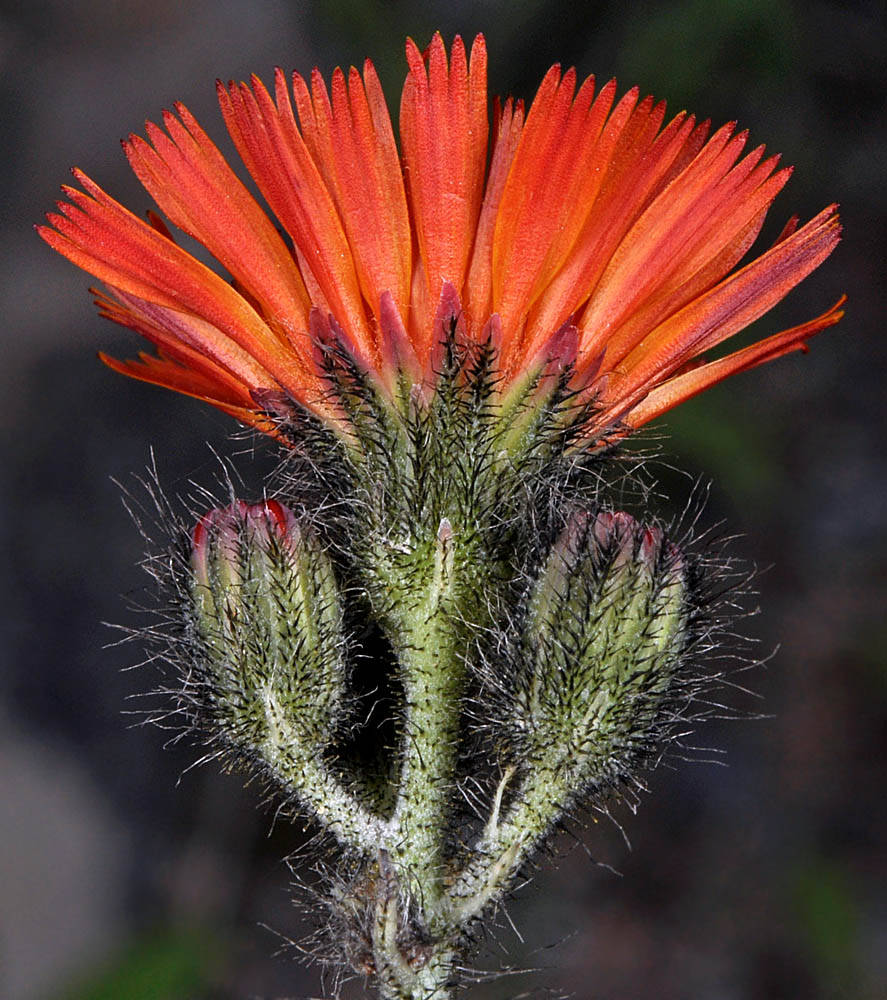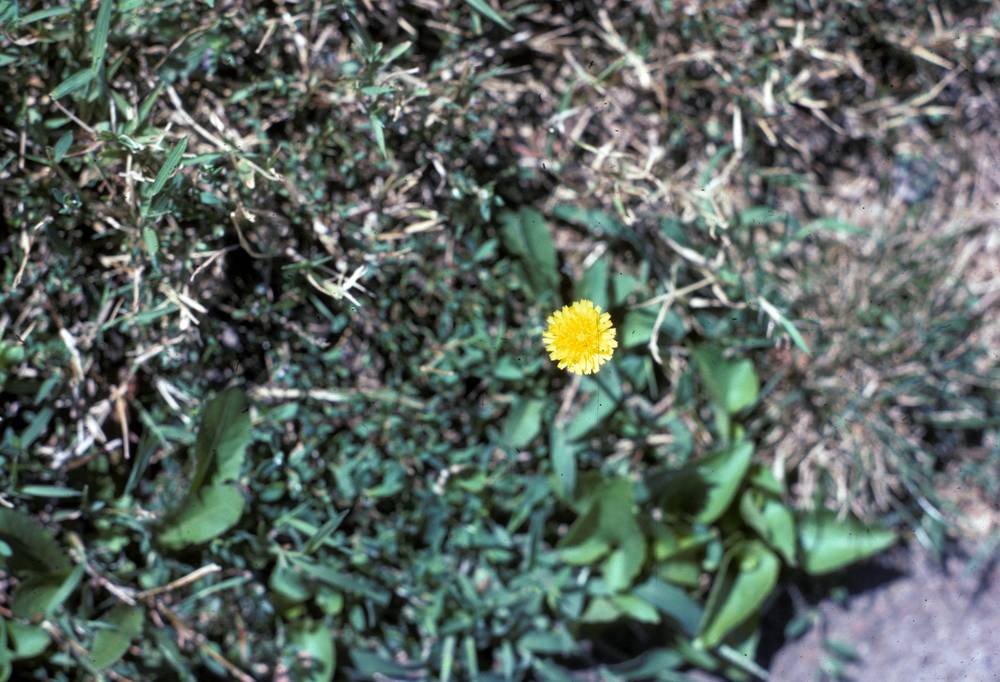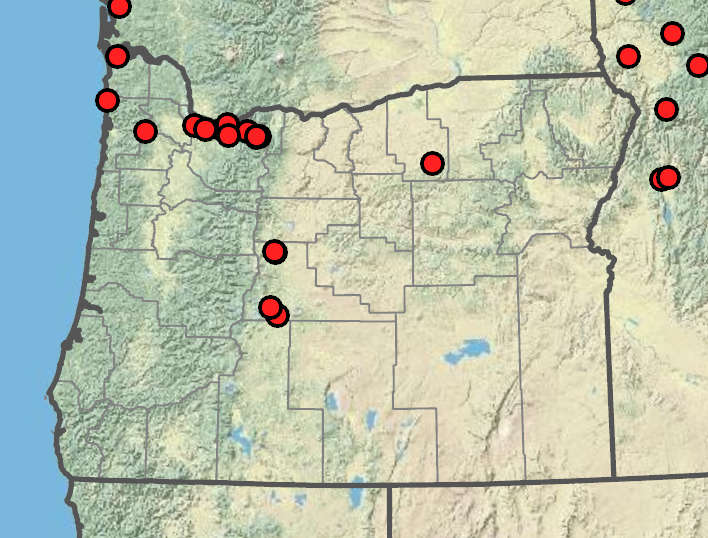Hieracium aurantiacum
Hieracium pilosella
devil's paintbrush, king-devil, orange hawkweed
mouse-ear hawkweed
erect; simple, pilose-hispid, usually also stipitate-glandular, tomentulose distally.
simple, tomentulose and lightly stipitate-glandular throughout or only distally, sometimes pilose proximally.
basal, sometimes 1 near stem base, oblanceolate, 5–20 cm;
margins entire;
tips acute or obtuse;
surfaces pilose-setose;
petioles short, winged.
basal or occasionally 1 or 2 cauline near bases, oblanceolate, 2–10+ cm, bases attenuate;
margins entire;
surfaces glabrous or pilose-setose, sometimes tomentulose below;
petioles short, winged.
raceme- or panicle-like arrays, bracteate or not.
in raceme- or panicle-like arrays.
campanulate in flower; ovoid in fruit, 6–8 mm.
campanulate in flower; ovoid in fruit, 7–9 mm.
25–100+;
ligules 10–15 mm; reddish orange, drying purplish.
60–120+;
ligules 10–15 mm, yellow.
linear-lanceolate;
surfaces blackish stipitate-glandular, usually setose-hispid; inner 13–30; outer > inner.
linear-lanceolate;
surfaces densely stipitate-glandular with black hairs, tomentulose; inner 18–30+; outer gradually shorter.
columnar, 1.2–2 mm, dark brown.
columnar, 1.5–2 mm, dark brown.
1(2–3).
=18, 27, 36, 45, 54, 63, 72.
=18, 36, 45, 54, 63.
Hieracium aurantiacum
Hieracium pilosella
Disturbed areas, roadsides, clearcuts, riverbanks, pastures. Flowering Jun–Aug. 100–1400 m. BW, Casc, CR, ECas. CA, ID, NV, WA; scattered in North America; Europe. Exotic.
Hieracium aurantiacum is a conspicuous and well-known weed over much of the United States and southern Canada. Its scattered distribution in Oregon indicates an ability to disperse by seed, and once established it may persist and spread by both seeds and stolons.
Grasslands, roadsides, lawns, disturbed areas. Flowering May–Jun. 0–300 m. Casc, WV. WA; widely scattered in North America; Europe. Exotic.
Kenton Chambers
Kenton Chambers





